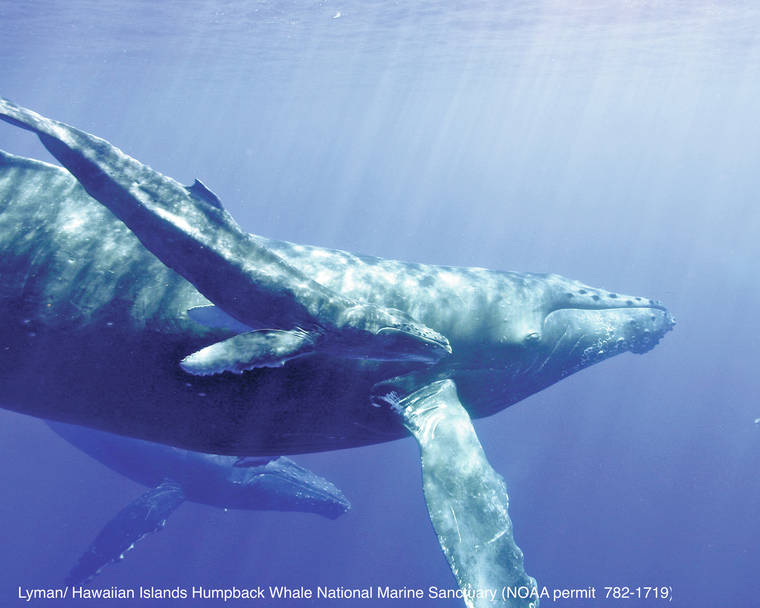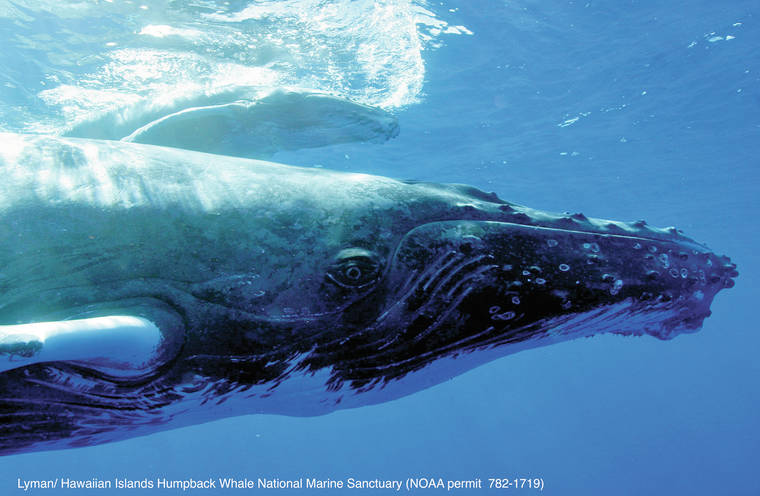Whale National Marine Sanctuary reminds the public that humpback whale season in Hawai‘i is underway. Each winter and spring approximately half of the North Pacific humpback whales, representing thousands of animals, journey to the Hawaiian Islands, including sanctuary waters, to breed, give birth, and nurse their young. While some whales have already arrived, the majority will be in Hawai‘i between January and March.
Whale National Marine Sanctuary reminds the public that humpback whale season in Hawai‘i is underway. Each winter and spring approximately half of the North Pacific humpback whales, representing thousands of animals, journey to the Hawaiian Islands, including sanctuary waters, to breed, give birth, and nurse their young. While some whales have already arrived, the majority will be in Hawai‘i between January and March.
Iconic humpback whales in Hawai‘i are protected by state and federal agencies. Approaching humpback whales when on or in the water within 100 yards or within 1,000 feet by air (including drones) can impact the animals and is illegal.
“Collisions between whales and vessels occur annually, presenting serious risks to boaters as well as the whales,” said Ed Lyman, natural resource specialist for the sanctuary. “Whale calves are particularly vulnerable because they are difficult to see and surface more often.” NOAA recommends remaining vigilant and going a slow, safe speed based on conditions, vessel type, and other factors that affect detection and avoidance in areas where whales may be present.
Humpback whales can also get entangled in fishing gear, which can result in starvation, physical trauma and infections, and may contribute to vessel strikes since the animals are less mobile.
The Hawaiian Islands Large Whale Entanglement Response Network, a community-based effort led by the sanctuary, supports large whale entanglement response efforts statewide under the authorization of a permit from NOAA Fisheries and their Marine Mammal Health and Stranding Response Program. The network involves many state and federal agencies, including the State of Hawai‘i Department of Land and Natural Resources, NOAA Fisheries Pacific Islands Regional Office, and the U.S. Coast Guard, as well as private non-governmental organizations, fishermen, researchers and other individuals.
If you see an injured or entangled marine mammal, keep a safe and legal distance and call NOAA’s Marine Mammal Stranding and Entanglement Hotline at 888-256-9840 or the U.S. Coast Guard on VHF channel 16 immediately. If you are reporting a vessel coming too close to a whale, call the NOAA Fisheries Enforcement Hotline at 800-853-1964 or email respectwildlife@noaa.gov.
Additional guidelines and safety tips can be found at https://hawaiihumpbackwhale.noaa.gov/visit/recreation.html.
Hawaiian Islands Humpback Whale National Marine Sanctuary is administered by a partnership of NOAA’s Office of National Marine Sanctuaries and the State of Hawai‘i through the Division of Aquatic Resources. The sanctuary works to protect humpback whales and their habitat through research, education, conservation and stewardship.






What do whales and Covid virus have in common,?
They both migrate back and forth annually thousands of miles, whales Alaska to Hawaii, Seasonal Virus migrate back and forth from Northern Hemisphere to. the Southern Hemisphere, and they both multiply along the way.